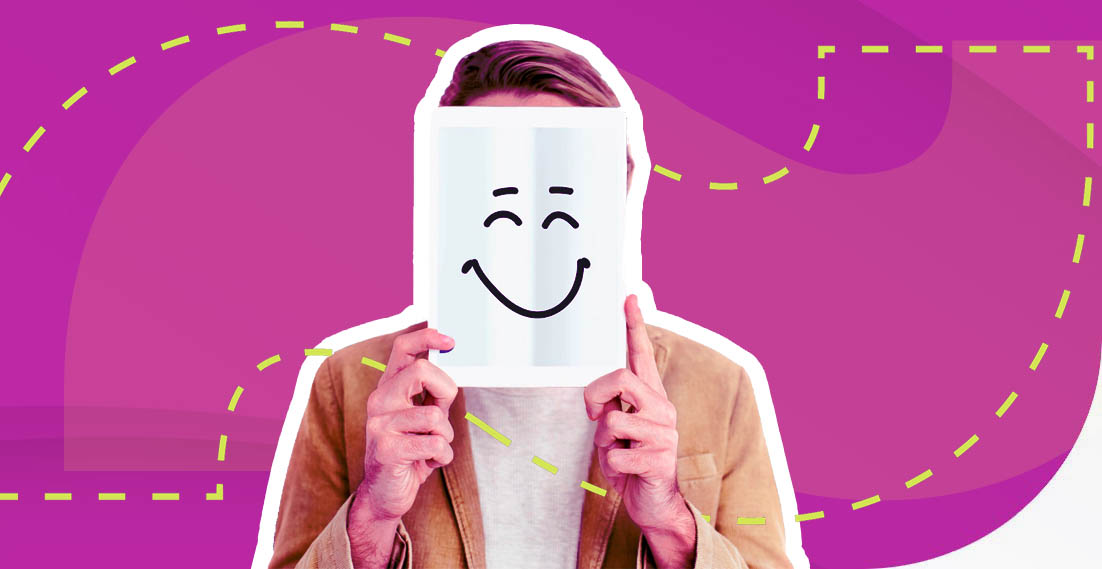Emoticons and emojis – images in the world of words

Emoticons are relatively recent arrivals to computer communication, especially to chats. All in all, very little researched so far, they nevertheless represent a significant contribution to the inevitable questioning of certain paradigms of language science. They are graphic signs imitating facial expressions or other objects demonstrating the speaker’s emotion, which interact with statements – typically sentences – to produce meaning beyond the literalness of the spoken logical sentence.
Join us and work as a translator
Emoticons are facial expression icons whose main function is to express emotion. They are also sometimes referred to as “smiley faces.” They were originally composed of the ASCII code (“American Standard Code for Information Interchange”) characters, which is the oldest standard for encoding typical characters in computer science. Thus, there are 128 common characters in the script: letters of the Roman alphabet, numbers and punctuation marks.
If originally emoticons consisted of ASCII characters, today in social networks and even in word processors, typing a sequence of characters “:)”automatically transforms this entry into this pictogram “☺.”
All emoticons derive from a semiotic system based on keyboard use. Indeed, it was the limitations imposed by the use of the keyboard, as well as chat conversations that led to the development of signs that allow emotionally charged verbal expressions, since the written word itself is one bit impersonal.
In the world of mobile telephony and SMS communication, all that is left are pictograms. Emoticons consisting of punctuation marks are hardly used there anymore, even if, interestingly, some cell phone brands still offer banks of emoticons consisting of punctuation marks. That said, they are automatically transformed into pictograms in the messages in which they appear. Some sites also sell more or less original “emoticon banks,” sometimes classifying emoticons thematically.
History of emoticons
The birth of emoticons is considered to be the publication on March 30, 1881 of an article in the American satirical magazine “Puck” containing four “faces”: happy, sad, indifferent and surprised. They were depicted in vertical form, and had not only noses, but also eyebrows – too complicated for permanent use.
The first time emoticons appeared in the Internet space was on September 19, 1982 at 11:44 a.m., when they were used by the American computer scientist and Carnegie Mellon University lecturer Scott Fahlman. During the exchange of e-mails with university colleagues, Fahlman proposed the use of an ideogram symbolizing a smile – “:-)” – to mark jokes, thus establishing it as a permanent element of the internal correspondence of the university’s academic staff. The ideogram quickly gained popularity in other schools as well.
Simplified forms of the ideograms appeared probably in the 1990s. Nevertheless, emoticons are much older than we might think.
In 1635, Notary Public Jan Ladislaides drew “faces” on documents verifying the conformity of the city’s finances. If the bills were consistent, he entered a smiling face; otherwise, he drew a sad one.
Also in the 17th century, in his poem “To Fortune” penned in 1648, Robert Herrick included the sentence “Tumble me down, and I will sit, Upon my ruins, (smiling yet:)”. The dispute over the desirability of writing it down in this form continues to this day.
Similar doubts are raised by the story related to the transcription of Abraham Lincoln’s speech. On August 7, 1862, the Times published a transcribed speech by the then President of the United States. It also included the sentence, “… but it is also true that there is no precedent for your being here yourselves, (applause and laughter 😉 […]”.
Advantages of using emoticons 🙂
With the advent of emoticons, the trend toward creating abbreviations of textual language has greatly diminished. The 1990s and 2000s brought a whole wave of incomprehensible forms with unexplored origins that did not evoke the right associations in the reader. The burst of laughter “LOL” can just as well be symbolized by emoticons. These allow us to retransmit our emotions, which can improve the quality of our communication. Emoticons are the digitization of our body languages and gestures. Have you ever tried to physically interact with a person without any emotion and without movement? It is very difficult, just as today a (rather personal) conversation without emoticons or emoji can give the impression of aloofness and lack of intimacy with the person. What’s the resulting education? Emoticons can be a way to interact very quickly and to break down the language barrier using the given universe of meanings.
Allegations about the use of emoticons 🙁
Today’s ways of communicating involve many digital technologies. Whatsapp, Facebook Messenger, Twitter – all of them are messengers in the professional world. Describing emotions is quite difficult for some, which is why sending a smile or a wink of an eye, is a much simpler activity. This, in turn, leads to the belief that sending emoticons avoids the effort of using the correct grammatical structure.
However, Pierre Halté, holding a PhD in language sciences at the University of Paris-Est Créteil, argues the opposite. “No, it’s a fantasy. Many people believe that emoticons contribute to the impoverishment of our verbal language. It is not true, though. Emoticons (and emojis) do not replace words. They replace gestures, intonation, etc.They integrate with and interact with the text.”
However, this does not change the fact that in the professional environment, an emoticon inserted in an e-mail message discredits the writer.
Indeed, a 2017 Israeli study found that receiving an emoji in professional correspondence projects a negative image of the sender in the reader’s mind, associating the act with a lack of professionalism and seriousness.
The analogy between sexism and emoticons is more serious. When a user reads an anonymous e-mail containing emojis, they often think that the author is a woman.
Do emoticons pose a threat to the art of writing?
No – because despite their growing popularity and ubiquity in our daily news, emoticons are not a language. “Emoticons are limited. They express neither the past nor the future. They don’t offer the equivalent of verbs or adjectives. Most often, they interact with the verbal message, so if we do not understand this message, we won’t read it properly. For these reasons, they do not threaten to displace the language in traditional terms,” assures Pierre Halté.
The digital industrial revolution has changed the way we communicate and write. Some reactionary technophobes are afraid of the demise of the art of writing, while others study this phenomenon under a magnifying glass, while most of us are just having fun testing new emoticons provided by Apple or Facebook. But is expressing ourselves through symbols so new? Didn’t the Egyptians write in hieroglyphics? Our mass use of emoticons probably reflects a return to primitive and natural gestures inherited from extinct civilizations. If the first inscriptions were pictographic, like emoticons, their system turns out to be more complex. The signs used in hieroglyphic language resemble objects, but can also refer to sounds or perform grammatical functions.
Expensive and long to produce – the appearance of parchment coincides with our transition into the Middle Ages, namely, the monopolization of education by the elites. Material therefore has the power to change the means of creating and disseminating knowledge. This is the case with the computer, especially the smartphone, which has opened up to writing emoticons and emoji. The keyboard has become a new medium, and tools are used to create new characters. This changes the way we write, especially punctuation. Punctuation tends to disappear, with emoticons or emoji taking its place. Gradually, syntactic punctuation is disappearing altogether in favor of emoticons. Admittedly, a semicolon is more often used to indicate a blink in an emoticon “; – )” than to emphasize a pause in a sentence. Our chat exchanges require less attention. Even if it means misinterpretations. To be precise, according to our researchers, emoji help with possible misunderstandings. They add meaning to the written verbal message, allowing for better understanding. A small smile at the end of a sentence can make the recipient understand the emotion. Without emoticons, expressing nuance would require a more careful approach to text and language.
What if emoticons became their own language? Because emoticons can change the meaning of an entire message, convey a message very quickly and express emotions, some fear that their use will reduce literacy levels and make people increasingly lazy. Will text messages become increasingly shorter to eventually be completely replaced by images? Will language as we know it disappear? We think there is nothing to worry about. The evolution of language does not necessarily mean the deterioration of language. The desire to simplify language and make it more practical has always been a goal set by people, and emoticons seem to be more of a complement than a proper language. For now, we continue to use them to enhance our words, communicate more effectively and learn language in a more relaxed way.
Learning the language with the help of emoticons and emojis
Here are some examples of situations in which learning language with emoticons can be useful:
a) You learn vocabulary related to emotions. You use a variety of emoticons to create flashcards about specific emotions instead of translating them directly into the target language. For example, you can use a smiling face to illustrate the word “happy” in a language of your choice.
b) By studying specific categories, such as fruits and vegetables, animals, tools and even astrological signs. Emoticons abound in each of these categories and allow you to expand your vocabulary with visual support.
c) You spend too much time thinking about what words correspond to those in your native language. Emoticons can replace the translation of a phrase or word when you can’t yet express yourself properly in a foreign language.
When are emoticons not useful when learning a language?
When used alone. Isolating them will not help you learn the language. In general, they should always be associated with a word, phrase or concept.
When you learn a formal language, such as business language. Emoticons are not common in formal, serious and professional discussions (in embassies, academies, job interviews, professional emails, etc.).
Different cultures use different body language. Smiles, greetings and even some gestures (such as “thumbs up,” which in some cultures can be an insult) are not used in the same way by the people involved. In such cases, you may find yourself in a situation where it is difficult to clarify a misunderstanding with emoticons or emoji to someone from another culture.
Aren’t emoji and emoticon the same thing? 🙂 =😊?
Emoticons always look like this:
🙂
or this *_*.
*_*.
They vary depending on the region of the world. It is accepted that there is a division between East and West.
Emoticons popular in the US and Europe are those that are read horizontally.
Examples: 🙂 🙁 😀
Emoticons typical for Japan, India or China are read vertically.
Examples: (o_O) (^_^)
Basically, an emoji has nothing to do with an emoticon. This is because an emoticon is a combination of two words: emotion (emotion) and icon (icon). Therefore, it contains a set of characters and symbols that are designed to pretend to be a human face and its accompanying emotions.
Emoji are small pictures, with which we can present the entire range of vocabulary related to our everyday life.
Emoji is an abbreviation of Japanese words: image (“e”), write (“mo”) and sign (“ji”). The creator of emoji is believed to be 27-year-old graphic designer Shigetaka Kurita , who created them for Japanese telecommunications company NTT DoCoMo. His goal was to create a series of characters that would convey information in a simple, concise way.
Why do people love emojis so much?
Sad. Smiling. Angry. Country flags, monkeys, flowers, accessories and… vegetables. When words aren’t enough, emoji are always available. Those little colorful icons that we use in our phones, social networks, texts and e-mails to express an emotion, idea or mood are always handy. Can these fun little icons help us learn language?
Emoji represent expressions, emotions, and even body language. We use images to express things that cannot be expressed in words. Embarrassment, nervousness, disappointment, excitement and sympathy are emotions that are difficult to express in words. And if previously using emoji in sad or unpleasant situations was frowned upon, it is now quite common to express genuine sadness or anger in just this way. Nowadays, the variety of emoji is so important that the type of icon we use and the way we use it says a lot about our personality.
Emoji is the fastest growing language in history.
According to The Telegraph, emoticons are the fastest-growing language in the world. Today, we send over 40 billion messages a day using 6 billion smiley faces. So it’s no surprise that in 2015, Oxford Dictionary chose one of them as WORD OF THE YEAR. – Face With Tears of Joy!
In 1995, the Unicode Consortium adopted 76 pictograms. This non-profit consortium oversees the inventory of characters in electronic text processing and sets standards for symbols, characters in various scripts. By 2010, in Japan, the trend of emoji popularity, a mass version of more than 1,000 pictograms was released.
The breakthrough came in 2011, when Apple introduced them to iPhones. Soon after, the symbols were also added to Android devices. Since then, the emoji pool has grown steadily: in 2015, different skin colors were introduced. In 2014, in cooperation with The Ad Council, the icon “eye in the balloon” was released to protest harassment. In 2017, regional flags were added.
Emoji have already become a common form of our communication and it is hard to imagine messages without smiling icons. However, it took years for us to learn to read the written dots and brackets as a new system of encoding emotions. Before that, no one in the world would have treated this 🙂 as a smile.
Nowadays, the use of emoji is so clear to us that they easily serve as a means of communication by building whole, sometimes complex sentences.
Translator of emoticons – a new specialization?
The Internet has facilitated many emerging new professions, but we did not expect this. Here is a London translation agency looking for an employee with an unusual profile: an emoji translator. Why? They’re everywhere. We use them every day; there are hundreds of them. But do we know their exact meaning?
The advertisement reads: Emoji translation is a growing field managed until now by software often insensitive to cultural differences. Therefore, we are looking for an exceptional person capable of bringing the human touch. How to become an emoji translator? A bit of a geek at heart, do you know trends, languages and IT? Why not try your luck? This will be an opportunity to “join a team of 3,000 linguists who know more than 200 languages. Necessary qualifications read: In the absence of a native speaker, the successful candidate must have a passion for emoji and demonstrate a strong knowledge of cultural differences and possible areas of application.
To apply, simply go to www.todaytranslations.com and contact the agency. If hired, your mission will be to translate documents based on emoji, but also to write monthly reports on trends related to their use and related cultures.
Thus a new profession arose, but the idea is not as far-fetched as it seems. This specialist will have to decipher emoji in communications to eliminate any misunderstandings about their use, since emoji in one language, culture or country do not necessarily have the same meaning elsewhere. They can cause significant misunderstandings between correspondents.
In Japan, the English term “poo” (colloquially “poop”) sounds very similar to the equivalent of “good luck.” That’s why the Japanese often send each other “brown cone” graphics when they wish the other party good luck.
Waving a hand is a common farewell for a European – in China it’s like giving someone the finger. An eggplant is just a vegetable to us, but in other cultures it is an unambiguous sexual symbol. In multinational corporations, when conducting important negotiations or carrying out foreign projects, it is easy to make a mistake.
The emoji “Goodbye” has the same meaning in France and the UK, but beware: in China it means… “You are no longer my friend.” When trading with Chinese customers, it is better to resist the temptation to use this icon!
Emoji translation apps
As long as the profession of Emoji Interpreter is not a widespread phenomenon, we will need the support of applications to help us navigate the world reduced to a pictogram. Apps, readily available on handheld media, will help us do just this.
Join us and work as a translator
Why are advertising campaigns not effective? 3 reasons related to the challenges of marketing translations
Learn about the 3 causes of ineffective advertising campaigns related to marketing translations.
Transliteration – translation challenges not only in the logistics industry
A mistake made due to a incorrect translation or rather transliteration can lead to serious operational and legal consequences, as we discuss below.
How to publish a book? Translation tips and more
How can you publish your own book? Before you make a decision, get to know the advantages and disadvantages of the proposed solutions, including in the context of possible book translation.
Website translation – a proposal for Women’s Day not only for e-commerce
The upcoming Women’s Day is the perfect opportunity to plan special marketing campaigns to reach new audiences. E-commerce companies are keen to introduce dedicated offers during this period. They also decide to expand abroad to tap the potential of international markets, also on everyday basis, outside special holiday periods. In this context, website translation plays a key role.



